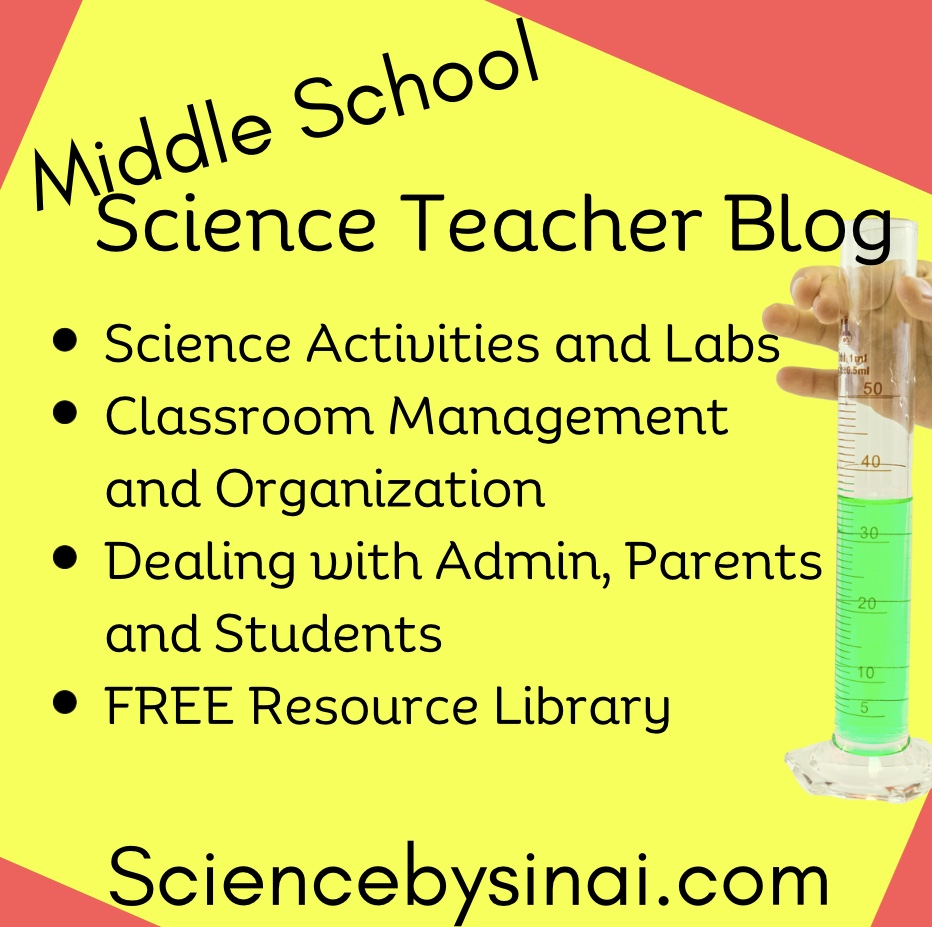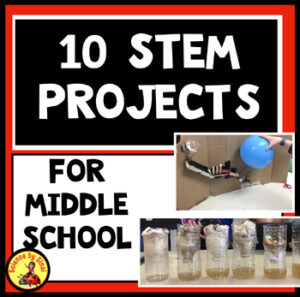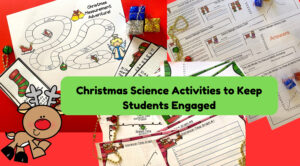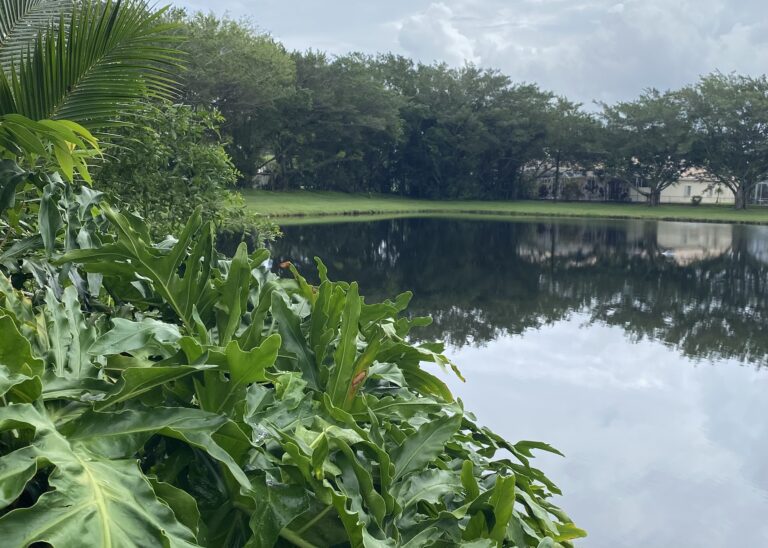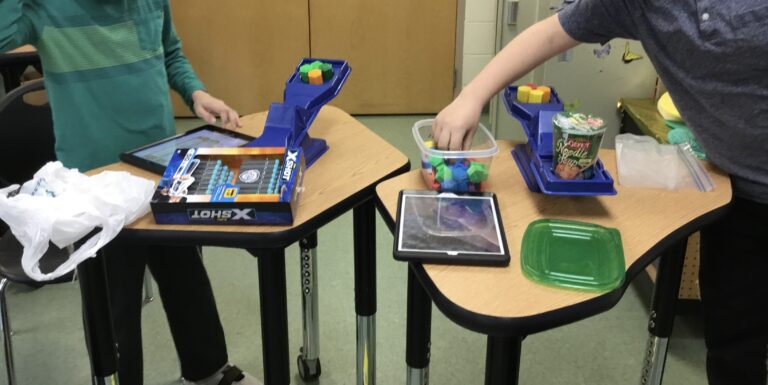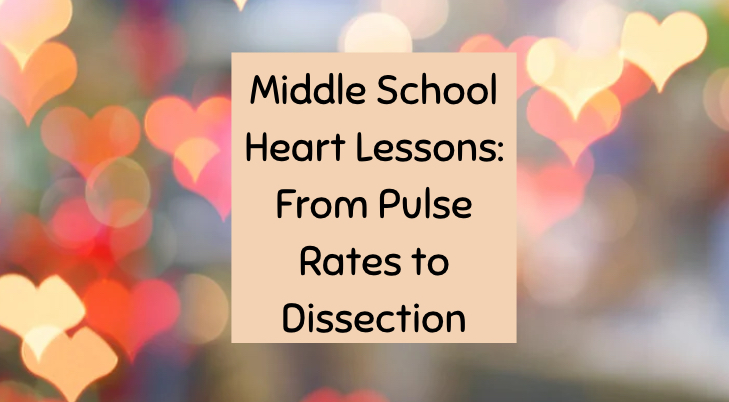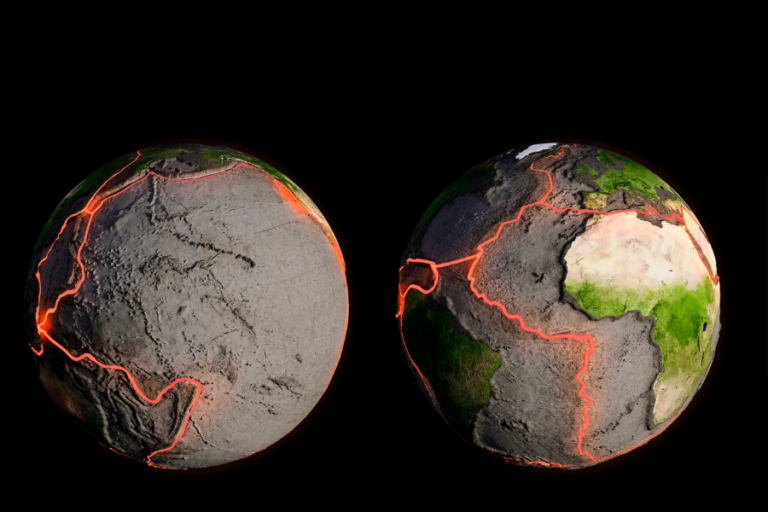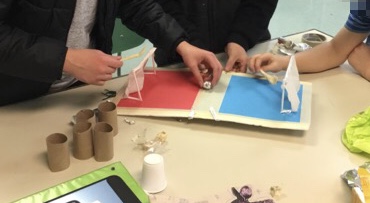10 Structured STEM Projects For Middle School
Do you want to do STEM projects for middle school but you’re not sure how to structure them or grade them?
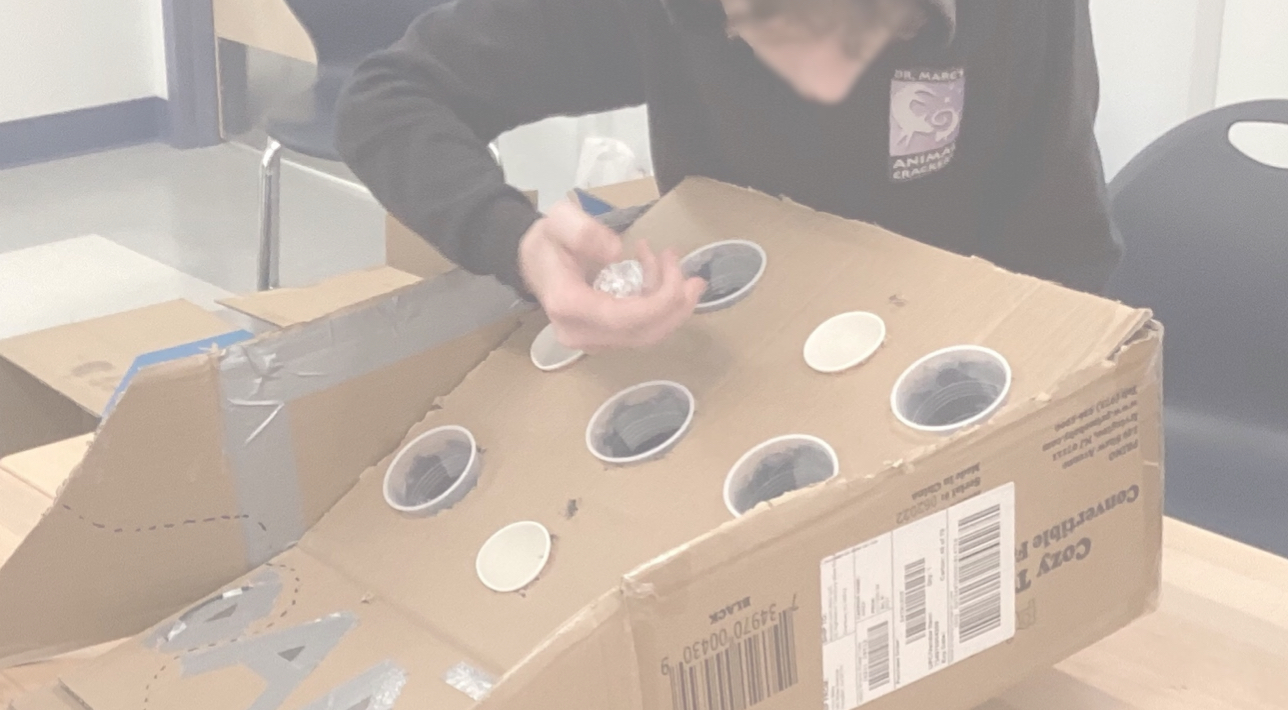
10 Structured STEM Projects For Middle School
October 2023
I’ve got you! It took me years to iron out the kinks but now I LOVE STEM activities! When I first started doing STEM projects, I loved the initial excitement in the room! I just let students keep working from day to day. Slowly, the students would start to get frustrated, and even bored, and they kept doing restarts. The projects ended up dragging on FOREVER with no good way to wrap them up.
Once I started adding strict structure with brainstorming sessions, check-ins and rubrics, the accountability went way up and the students stayed much more focused. This allowed them to let their creativity kick in and, as a result, the projects have been so much better!
There are 10 major STEM projects that I do in middle school and I have broken them down into three categories: physical science, life science and environmental science. All of the projects involve very little extra materials and I promote using recyclable objects. The only exception to this rule may be the electrical circuit games. Each one of these is a product on Teachers Pay Teachers so you could go grab the directions, check ins, rubrics and follow up questions for each.
Physical Science: Create Rube Goldberg Machines
Rube Goldberg machines(How to Create Exciting But Structured Rube Goldberg Machines) are so incredibly fun and there is so much learning going on while students are working on them. Just the trial and error alone is super important. As I mentioned in my blog on Rube Goldberg machines, I tell the students upfront that they WILL be frustrated and they WILL want to throw the materials down on the floor and stamp on them. Ha Ha . But….. they will be absolutely beyond happy when the machine does what it’s supposed to do!
I have the students figure out an end goal such as popping a balloon, pouring a cup of water or dropping a tea bag into a cup. I encourage them to work backwards using simple machines to create the Rube Goldberg machine. We take videos, do a presentation and we invite other students to come in to see their machines.
Physical Science: Food Chains and Rube Goldberg Machines Transfer of Energy Projects
A variation that stresses the transfer of energy in a Rube Goldberg machine and compares it to a food chain which also has the transfer of energy.(STEM Energy Project Using Rube Goldberg Machines and Food Chains!) I give the students a four level food chain from different ecosystems. Students design a four stepped Rube Goldberg machine to reflect the transfer of energy from producers, to first consumers, to second consumers, to the top predator. I have this in many different ecosystems such as the deciduous forest, savanna, rainforest, tundra, desert and ocean.
Physical Science: Creating Magnet Mazes
Learning about magnets and magnetic fields is much more fun when you have your students create magnet mazes.(How to Create STEM Magnet Mazes). They create obstacles such as bridges or holes to jump across to test the range of the magnetic field. Again, the trial and error process is very rewarding to watch. I have had students make themed mazes such as a race track, a city, an airport or one group did a walk-through Disneyland!
Physical Science: Designing Electrical Circuit Arcade Games
A very exciting project that my eighth graders do is designing electrical circuit arcade games.(How to Create STEM Electrical Circuit Games). I do a bare minimum of introducing series and parallel circuits, conductors, insulators and switches. I have them get into groups and design arcade games using recyclable materials. The highlight of the end of the activity is inviting the lower school to play the games. Students have done quiz boards, race tracks, pinball like machines and games that involve throwing a ball into cups that light up. As an alternative to these games, I give the option to build a tiny house and show the electric wiring of the rooms.Those were also super creative!
Life Science: Designing Organisms in a Symbiotic Relationship
When learning about the relationships between organisms and ecosystems, we learn about symbiosis. (How to Create a Symbiosis STEM Project). This STEM project has students focusing on symbiotic mutualism which is when both organisms involved benefit from the relationship. The goal of the project is for students to design two organisms that need each other for survival. The organisms must live in an existing ecosystem, such as a rainforest, and have adaptations to survive there. I have students usually working in pairs and they build the two creatures using recyclable materials with daily check-ins and rubrics. I also require a video describing each organism and the story of how they benefit from the relationship.
Life Science: Creating Aliens with Adaptive Traits and Using Punnett Squares to Cross Them
While working with genetics, we do some basic Punnett square activities and then we launch into the STEM project.(How to Teach Punnett Squares and Genetics Using Aliens) Students design a male and female alien with at least five traits that help them survive in their made up environment. They decide which traits are dominant and recessive, and then create the alleles for their male and female, with some being homozygous and some being heterozygous. Using the extensive directions I give them, they randomly cross the two aliens using Punnett squares for the five traits. They design the baby aliens based on that cross.
My students get so excited and want to create more babies and generations! I have recently had them use a choice board as to how they would like to present them to the class. They can make a stop motion video or animation, a detailed poster, news article, or they could use clay or other materials to create their creatures. I’ve done this at the end of the school year and it is a super way to keep them creative and interested.
Life Science: Invent a New Method of Seed Dispersal
While learning about plants, we talk about seed dispersal using either wind, water, animals or “explosive” devices. (Design a Seed DispersaL Method Structured STEM Project with Rubrics). I show some YouTube example videos as an introduction and then the students design their own plant with a seed dispersal method.
The first time I did this was while we were all remote, during the pandemic, and the results were unbelievable! Students were involving their families and creating these seed or seed pods. One boy used a Nerf gun foam projectile and drilled a hole in a bath bomb with his father. He put the foam projectile into the hole of the bath bomb. The idea was that the bath bomb was the seed pod and they dropped it into the bathtub. They videoed a time lapse until the bath bomb dissolved and the foam projectile popped up to the surface of the water to “germinate”!
Another student had a balloon full of seeds that he hung from a branch of a tree and, when the balloon popped, lots of seeds scattered everywhere. Other students made sticky items and attached it to their pets for the animal dispersal. I now do this in my classroom and they still come up with very clever ideas such as seeds that have miniature parachutes attached, pods that unfold when placed on water, pods that stick to socks and so on.
Environmental Science: Designing Water Filters
Students in my school know that every year my sixth graders will be designing filters to clean water. The older students, who have already done it, can’t wait to give advice and peek in to see how the contest is going!(Design Water Filters With This Exciting STEM Project!)
The basic directions involve simply cutting an empty water bottle in half and then inverting one half to make a funnel. Using my brainstorming page, students go home and use any materials that they want to create the water filter in the funnel half. Meanwhile, I take a gallon jug and create the most disgusting, dirty water solution that I can!
On the day of the contest we all sit around one table and students are given exactly 100 mL of my dirty water. Their goal is to be the one that has the cleanest water come out of the bottom of the filter.
Most of the time, the results of the first day are not that clean looking. Definitely lighter but not clear. So what do we do? They go home and REDESIGN their filters and we have a second contest. We always see a huge improvement and sometimes I’m amazed that the students produce water that looks so clean that it looks drinkable. The idea that they shouldn’t be happy with the first design that they make is important and that redesigning and redesigning is what engineers do.
Environmental Science: Tracking Car Air Pollution
While we are learning about air pollution and preparing for Earth Day, the students do a project where they track the family car to talk about how much they contribute to air pollution with just their family.(Teaching Students About Their Individual Affect on Air Pollution).
I put a lot of privacy parameters on this project, for obvious reasons, as they track their car for a week. If that’s a problem for any parent, I provide realistic data for them to use. Once students have written down where their car has gone, we classify those trips as necessary trips, luxury trips or semi luxury trips.
We take that data and create numerous bar and pie graphs. I have them do it on paper, and either Google sheets, Excel or Numbers. Students understand that the raw data, the private data, stays in their notebook but we are still able to see the results represented graphically. We can then discuss how they could reduce the luxury trips that their family takes.
Environmental Science: Analyzing and Redesigning Excess Product Packaging
A very eye-opening STEM project has to do with municipal waste, particularly plastic, and how much is produced unneeded packaging. (Inspiring Middle School Students to Minimize Their Impact on Municipal Waste).
Students bring in an unopened package and we determine what percent of that product is actually trash. What percentage of that product is actually headed to the landfill? They bring in anything from food products to new toys and they are always shocked that many of the products are between 40 to 60% trash!
We use the balances to find the mass of the package and product and then they use some math skills to find the percentage. I have these all laid out in my product on Teachers Pay Teachers. Depending on which age group you’re working with, you may need to teach percentages, which is an extra bonus!
After the students have worked on finding the percentage, we analyze the package carefully and decide what was extra and unneeded. Now they redesign the package for that product! They base this on their knowledge of recyclable materials, keeping the product relatively lightweight, safe and theft proof with the least amount of packaging possible. I have a blog post on this and honestly it’s something the students have never thought about before!
Conclusion
STEM projects that tie into your present unit are the best! Plus, using structured pieces helps keep the students accountable and focused plus gives you lots of material to put in your gradebook. all of the above products are on my Teachers Pay Teachers store at Science by Sinai.
